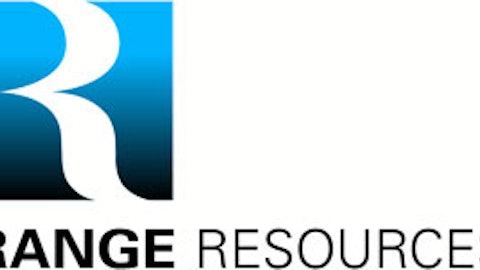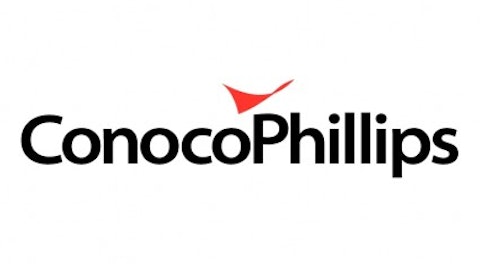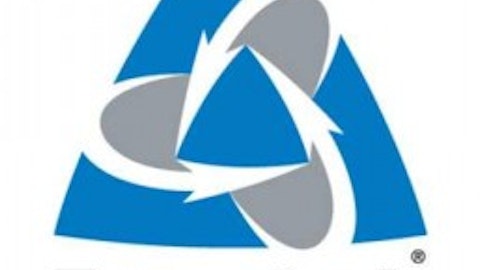With the surge in natural gas production in the U.S. and other countries around the world, companies are constantly finding new ways to put the cleaner-burning fuel to work. Some U.S.-based firms, for instance, are looking to export gas in liquefied form, known as LNG, to countries that don’t have a free trade agreement with the U.S.

Meanwhile, a select few other companies are thinking about using natural gas in a very different way – by turning it into higher-value petroleum distillates, including diesel, naphtha, and lubricant base oils through a technology known as gas-to-liquids refining, or GTL. Royal Dutch Shell plc (ADR) (NYSE:RDS.A) is one of the leaders in the use of this technology and is currently thinking about building another GTL plant on the U.S. Gulf Coast. Let’s take a closer look.
Shell and GTL
Royal Dutch Shell plc (ADR) (NYSE:RDS.A) is well versed in the intricacies of the GTL process. The Hague-based company has spent nearly four decades researching GTL technology and has extensive experience in operating GTL facilities, including the world’s first commercial GTL plant in Bintulu, Malaysia, and the Pearl GTL facility in Qatar, currently the world’s largest.
Since Pearl came on stream in 2011, Royal Dutch Shell plc (ADR) (NYSE:RDS.A) has improved its proprietary GTL technology further still. If the company were to construct another GTL plant similar in size to Pearl, technological improvements and efficiency gains could deliver a 50% improvement in throughput volumes over Pearl, according to Royal Dutch Shell plc (ADR) (NYSE:RDS.A)’s top GTL scientists.
Improvements in catalysts and synthesis reactors – the core process unit of a GTL plant – will also allow the company to use fewer reactors in future projects. In fact, Royal Dutch Shell plc (ADR) (NYSE:RDS.A)’s head GTL process engineer, Arend Hoek, told Platts that it would be possible to achieve the same throughput levels as Pearl but with a third fewer reactors.
Matthias Bichsel, Royal Dutch Shell plc (ADR) (NYSE:RDS.A)’s projects and technology director, reckons that cost savings from these and other process efficiencies and technological improvements should be “in the 15% range, perhaps a bit more”.
Massive capex for Gulf Coast plant
However, these savings may not be enough to offset the daunting costs of building such a massive GTL export plant on the U.S. Gulf Coast, despite the ample supply of cheap natural gas feedstock the plant would be able to access. Shell reckons the plant, which would be similar in size to Pearl, would cost more than $10 billion.
That’s because Shell would likely have to build much of the plant overseas, due to higher wages and a shortage of skilled workers in the U.S. Gulf region. According to Bichsel, parts of the plant would likely be built in places such as South Korea and then shipped to the U.S. to be reassembled on the Gulf Coast site.
The company said that it is assessing various locations in Louisiana and Texas to be the potential site for such a facility, but added that it doesn’t expect to reach a decision on the project’s feasibility until around 2015. One additional motivation for building the plant might be that, like Pearl, prices for some of its products, such as diesel, would be linked to Brent oil prices and thereby provide a hedge against the company’s exposure to natural gas.
What’s next for GTL?
Even if Shell were to build the plant this year, it would be among just a handful of GTL plants around the world that are operated commercially. Besides Pearl in Qatar, commercial GTL plants can only be found in South Africa and Malaysia and number in the single digits globally.
However, interest in GTL continues to grow. In December, South African energy firm Sasol Limited (ADR) (NYSE:SSL) said that it would build the first commercial GTL facility in the U.S. The Johannesburg-based company has pinpointed Louisiana as the plant’s chosen location due to that state’s copious reserves of natural gas, and said it expects production from the facility to begin in 2018.
If natural gas prices remain low and Shell and others continue to improve on the economics of GTL facilities, we may see some more of them in the future. But that’s a pretty big if.
The article Will Shell Build Another Gas-to-Liquids Plant? originally appeared on Fool.com and is written by Arjun Sreekumar.
Fool contributor Arjun Sreekumar has no position in any stocks mentioned. The Motley Fool recommends Sasol.
Copyright © 1995 – 2013 The Motley Fool, LLC. All rights reserved. The Motley Fool has a disclosure policy.




